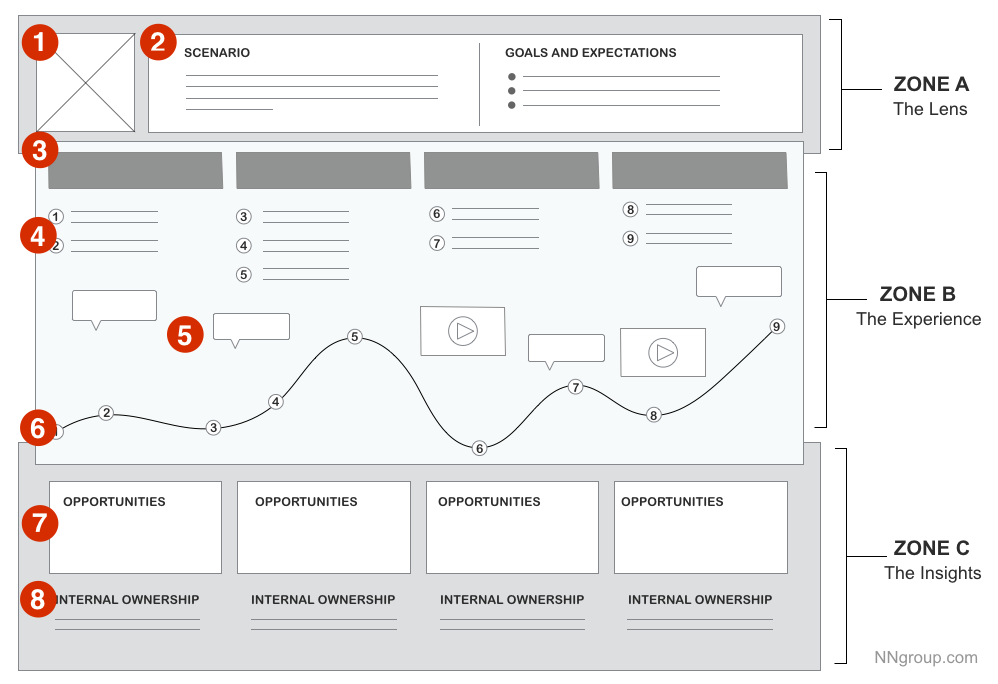- Created by Robert Fay on Jul 24, 2020
You are viewing an old version of this page. View the current version.
Compare with Current View Page History
Version 1 Next »
What is a Service Blueprint?
A service blueprint is an artifact that visually describes the unseen — how the behind-the-scenes people, processes, and physical (or digital) resources ultimately support a specific customer journey.
Why Should You Use a Service Blueprint?
Your customer's experience does not depend on your org chart.
Journey Mapping provides us with valuable insight into the customers’ emotions. This is the platform from which we can build develop improvements to enhance the customer experience, guide them through their journey and ultimately help them to achieve their goal in interacting with us or our product.
How Do We Do This?
There are various additions or modifications on how one can produce a Customer Journey Map. However the basic steps to developing an effective Customer Journey Map are as follows:
- Identify the Persona/Point of view: There can be numerous types of users who come into contact with your product or service. The Customer Journey Map should focus on one.
- Identify the Scenario/Goal: Choose one scenario or one goal which would cause your previously identified Persona to interact with your product/service.
- List the Stages/Phases: Based on the Scenario/Goal you’ve identified, list all the stages of the journey that the Persona would take to reach their Goal. It is important to list these from the customer’s perspective and not your own.
- List Actions, Mindsets and Emotions: The key component of the story being told by the journey map is what the Persona is doing, thinking and feeling. Under each phase list the actions the customer is taking along with the associated thoughts and feelings. This information should be gathered from research collected through methods such as Contextual Inquiries, Field Data and Diary Studies.
- List Touchpoints and Channels: The map should correlate all touchpoints and channels with the goals and/or actions of the customer. This helps to identify areas of potential communication/service breakdowns.
- Identify Opportunities for Improvement: Use the insight you gathered to point out occasions where you can improve the customer experience and assist them in accomplishing their goal.
Microlearning
4 Key Components of Service Blueprints
A service blueprint visualizes the relationships between different service components — people, props, and processes. Four key elements comprise a framework for service blueprinting that can be scaled to any scope or timeline.
The 5 Steps to Service Blueprinting
Five key steps comprise a framework for service blueprinting that can be scaled to any scope or timeline.
HCD PROCESS
RELATED METHODS
KEY TERMS
Persona/Point of View: A type of customer that interacts with your product/service.
Scenario/Goal: The situation which is the ultimate reason that the customer will interact with your product/service.
Touchpoint: Each instance in which a customer “touches” or interacts with your product/service during the Scenario is a touchpoint.
Channel: The method of communication or interaction with which the customer is able to interact with the product or service.
- No labels
 ISG Playbook
ISG Playbook APIs
APIs